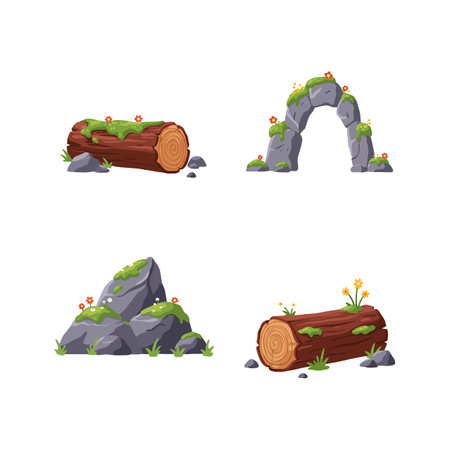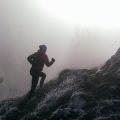Introduction to Outdoor Hydration Essentials
When you’re hitting the trail, whether for a day hike or a backcountry adventure, staying hydrated isn’t just about comfort—it’s a safety essential. Choosing the right hydration system can make or break your hiking experience, and that’s why so many hikers debate between hydration bladders and bottles. Both options have their unique perks and drawbacks, but what they share in common is their ability to keep water accessible while you’re on the move. Bladders allow for hands-free sipping through a hose, perfect for those who like to keep a steady pace without stopping. Bottles, meanwhile, offer simplicity, easy refills, and versatility. As the market expands with both budget-friendly (best value) and premium (top-shelf) choices, it’s more important than ever to understand which system fits your needs—and your budget—so you can hit the trail confidently and comfortably.
2. Best Value Hydration Bladders and Bottles
For hikers who want reliable hydration without splurging on premium gear, there are plenty of budget-friendly bladders and bottles that deliver solid performance. These value picks are perfect for day hikes, weekend trips, or anyone just getting started with outdoor adventures. They may not have all the bells and whistles of top-shelf models, but they’ll keep you hydrated and happy on the trail.
Reliable Choices for Thrifty Hikers
The best value options typically focus on durability, leak resistance, and ease of cleaning. While they might skip advanced features like quick-disconnect hoses or antimicrobial coatings, these products stand out for their dependability and wallet-friendly price tags.
| Brand & Model | Capacity | Key Features | Approximate Price |
|---|---|---|---|
| HydraPak Shape-Shift | 2L, 3L | Flexible design, wide opening, BPA-free | $25-$35 |
| Nalgene Wide Mouth Bottle | 32oz (1L) | Virtually indestructible, easy to clean, fits standard filters | $12-$16 |
| CamelBak Crux Reservoir | 2L, 3L | Ergonomic handle, high flow bite valve, easy fill cap | $30-$40 |
| Sawyer Squeeze Pouch Bottle | 16oz, 32oz | Packs down small, integrates with Sawyer filters | $10-$15 (for pack of 3) |
Why These Products Stand Out
These hydration solutions are widely available in the U.S., with replacement parts and accessories easy to find at major retailers. Their simple construction means fewer things can break on the trail—a huge plus for peace of mind. Many hikers love how Nalgene bottles double as hot water bottles in cold weather or measuring cups at camp. HydraPak and CamelBak offer bladders with user-friendly bite valves and quick cleaning—great for beginners or families hiking together.
A Practical Tip for Women Hikers
If you’re concerned about pack weight or space, opt for flexible pouches like the HydraPak or Sawyer options; they collapse flat when empty and fit easily into smaller backpacks. And don’t forget: always test your new hydration system at home before heading out to avoid surprises on the trail!
![]()
3. Top-Shelf Picks for Premium Hydration
If you’re a hiker who demands the absolute best from your gear, it’s worth exploring the top-shelf hydration bladders and bottles that go above and beyond standard options. These premium picks are designed with advanced features, exceptional durability, and innovative technologies that cater to serious adventurers and anyone who wants to invest in long-lasting performance.
Cutting-Edge Materials and Design
High-end hydration systems often use ultra-durable materials like BPA-free Tritan, medical-grade silicone, or taste-free polyurethane. These materials not only resist punctures and leaks but also ensure your water tastes clean, even after miles on the trail. Many premium bladders feature reinforced seams, wide-mouth openings for easy cleaning, and ergonomic bite valves that prevent drips while delivering a satisfying flow rate.
Innovative Features for Ultimate Convenience
Expect thoughtful details such as quick-disconnect hoses for effortless refills, magnetic hose clips for one-handed access, and insulated sleeves to keep water cool longer. Some top-tier bottles come with built-in filtration systems—perfect for backcountry treks where water quality is a concern. Others offer modular designs, letting you switch between bottle and bladder formats depending on your adventure.
Brands Leading the Pack
In the U.S., brands like HydraPak, CamelBak, Osprey, and Platypus are known for their high-performance hydration solutions. Their flagship models often include lifetime warranties and customer service that stands behind every product. While these options come at a higher price point, many hikers find the investment worthwhile for peace of mind on challenging trails.
Whether you’re preparing for a thru-hike on the Pacific Crest Trail or simply want to treat yourself to the best gear available, these top-shelf hydration picks deliver reliability and comfort with every sip.
4. Feature Comparison: What Really Matters?
When choosing between best value and top-shelf hydration bladders and bottles for hiking, understanding which features truly impact your experience is essential. Let’s break down the most important factors—capacity, ease of cleaning, leakproof design, and comfort—and see how both budget-friendly and premium options stack up.
Capacity: Meeting Your Hydration Needs
The right capacity can make or break your hike. While day hikers may only need 1-2 liters, long-distance trekkers often require 3 liters or more. Both value and top-shelf products come in various sizes, but premium brands often offer more flexibility with modular systems or add-on reservoirs.
| Feature | Value Picks | Top-Shelf Picks |
|---|---|---|
| Typical Capacity Range | 1L – 2.5L | 1L – 3L+ |
| Expandable Options | No/Minimal | Yes (modular) |
Ease of Cleaning: Stay Healthy on the Trail
A hydration system that’s tough to clean can harbor bacteria and odors. Value picks usually have narrow openings, making them harder to scrub, while top-shelf models feature wide-mouth designs or detachable hoses for thorough cleaning. Dishwasher-safe materials are also common among high-end choices.
| Cleaning Feature | Value Picks | Top-Shelf Picks |
|---|---|---|
| Mouth Opening Size | Narrow/Standard | Wide Mouth/Quick-Release Tubes |
| Dishwasher Safe? | Rarely | Frequently |
| BPA-Free Materials | Most, but check labels | Always (industry standard) |
Leakproof Design: Protecting Your Gear and Peace of Mind
No one wants a soggy backpack! Leakproofing is where premium brands really shine with advanced valve technology and reinforced seams. Value options might work well initially but can develop leaks faster under heavy use.
| Leakproof Features | Value Picks | Top-Shelf Picks |
|---|---|---|
| Bite Valve Quality | Simpler, may drip over time | No-drip valves; lockout features |
| Seam Strength/Quality Control | Adequate, variable by brand | High—often tested individually before shipping |
| Lid/Gasket Durability | Sufficient, replaceable parts rare | Exceptional; replacement parts available |
Comfort: All-Day Wearability for Every Hiker
The best hydration system should feel almost invisible as you hike. Budget models tend to be heavier and less ergonomic, while top-shelf choices prioritize lightweight materials, contoured shapes, and soft bite valves for effortless sipping.
| Comfort Feature | Value Picks | Top-Shelf Picks |
|---|---|---|
| Packing Weight | Tends to be heavier | Lighter; advanced materials |
| Bite Valve Comfort | Sufficient; basic silicone | Softer; angled for easy access |
| Packing Compatibility | Larger profile; less flexible | Slimmer; fits most packs easily |
| User-Friendly Design | Straightforward; few extras | Ergonomic handles, magnetic hose clips, quick-release tubes |
The Bottom Line: Choose What Fits Your Adventure
If you’re new to hiking or on a tight budget, value picks offer reliable basics for occasional use. For those who demand comfort, durability, and convenience—especially on longer treks—the investment in a top-shelf bladder or bottle pays off in performance and peace of mind. Consider what matters most for your adventure style before making your pick!
5. Eco-Friendliness and Materials
When choosing between best value and top-shelf hydration bladders and bottles, eco-friendliness and material safety are important for hikers who care about their environmental impact. Many budget-friendly options now feature BPA-free plastics, but the quality and durability can vary. Always look for labels stating “BPA-free,” as this ensures that your bottle or bladder won’t leach harmful chemicals into your water.
Sustainable Choices
Top-shelf brands often go a step further by using recycled materials or bioplastics, offering not just longevity but also a smaller environmental footprint. For example, some premium hydration bottles use Tritan Renew or other recycled polymers, helping to reduce single-use plastic waste. These products may cost more upfront, but they’re designed to last for years of regular hiking, making them a smart investment for eco-conscious adventurers.
Environmental Certifications
If sustainability is high on your priority list, check if the manufacturer has environmental certifications such as Bluesign® or is part of 1% for the Planet. These badges signal a brand’s commitment to responsible production and environmental giving—values that align with many American outdoor enthusiasts.
Reusable Over Disposable
Whether you opt for best value or top-shelf, reusable hydration systems always beat disposable water bottles in terms of sustainability. Washing and refilling your bottle or bladder reduces waste and supports a greener hiking culture. Consider how easy each option is to clean and maintain—a well-cared-for hydration system minimizes the need for replacements and keeps plastic out of landfills.
6. Tips for Choosing What’s Right for You
When it comes to picking between best value and top-shelf hydration bladders or bottles, there’s no one-size-fits-all answer. Your choice should reflect your unique needs, hiking style, and comfort preferences. Here are some practical tips to help you decide what’s best for you:
Assess Your Hiking Habits
Consider Hike Duration and Frequency
If you’re heading out on short, local hikes a few times a month, a value-priced bottle or bladder may be all you need. For multi-day backpacking trips or frequent adventures, investing in a top-shelf option can pay off with extra durability and features.
Evaluate Terrain and Weather
Steep climbs or hot summer days mean you’ll sweat more and need to hydrate often—here, the convenience of a high-quality bladder that fits snugly in your pack could make a real difference. If you hike mainly in cooler climates or less demanding trails, a sturdy bottle might suffice.
Match Capacity to Your Needs
A 1-liter bottle is great for casual hikes or if you can refill along the way. For longer treks or dry environments, look for 2-3 liter bladders or larger bottles to ensure you stay hydrated without constant stops.
Prioritize Comfort and Ease of Use
Packs, Fit, and Accessibility
If you wear smaller packs or have narrow shoulders, check that your chosen system fits comfortably. Hydration bladders with easy-to-use bite valves can be sipped hands-free—perfect for women who want to keep moving without stopping to unscrew lids.
Cleaning and Maintenance
Bottles are generally easier to clean and dry than bladders. If convenience matters most, look for wide-mouth bottles or bladders with cleaning kits included.
Set Your Budget—and Know When It’s Worth Upgrading
If you’re new to hiking or on a tight budget, start with a reliable value option—you can always upgrade later as your needs grow. But if comfort, performance, and peace of mind matter most (especially on longer or remote hikes), investing in top-shelf gear can be worth every penny.
Trust Your Instincts
The best hydration system is the one that feels right for you—so try different styles if possible before committing. Listen to your body’s needs on the trail, and don’t be afraid to adjust as you gain experience.


